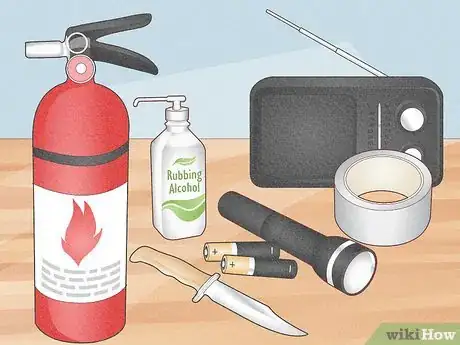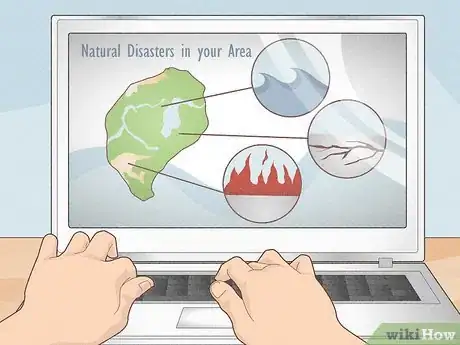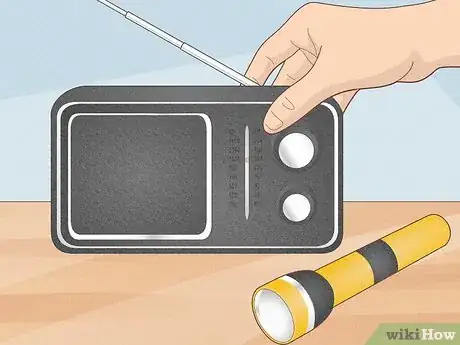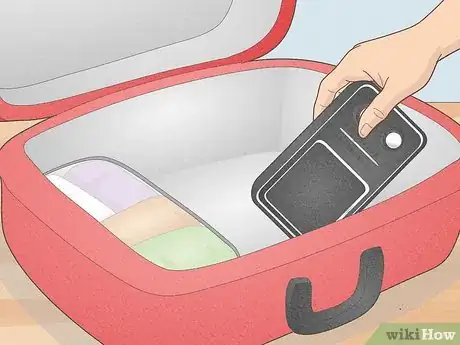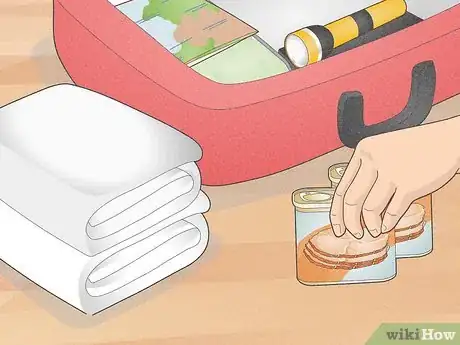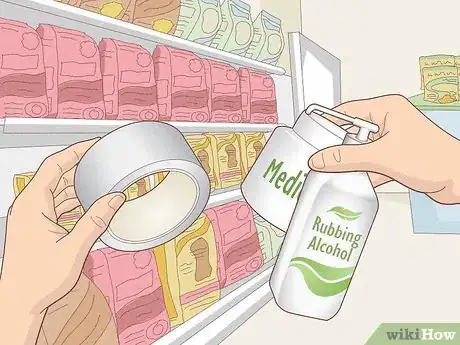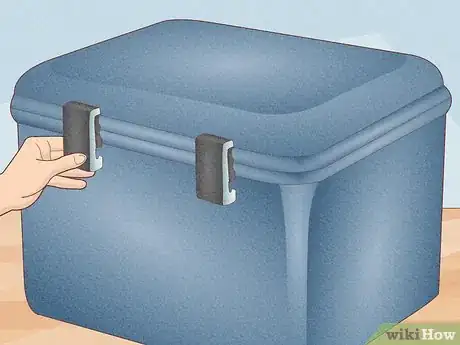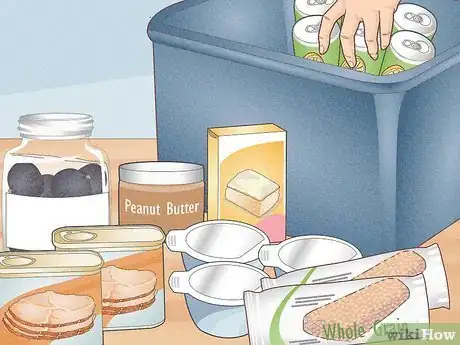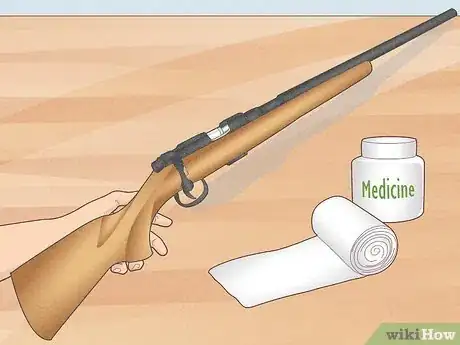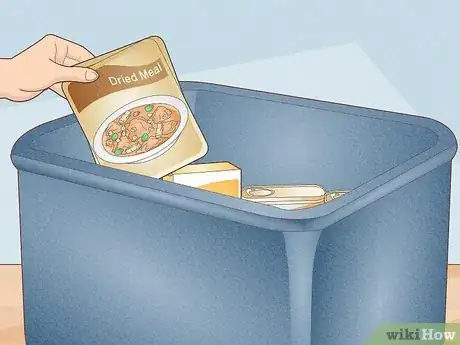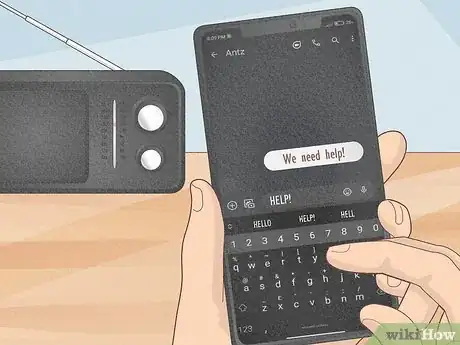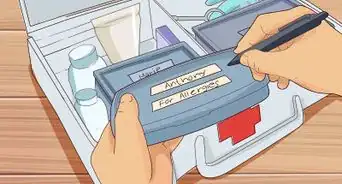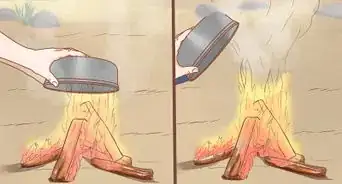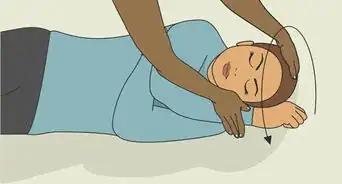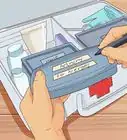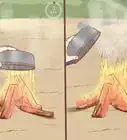wikiHow is a “wiki,” similar to Wikipedia, which means that many of our articles are co-written by multiple authors. To create this article, 55 people, some anonymous, worked to edit and improve it over time.
wikiHow marks an article as reader-approved once it receives enough positive feedback. This article has 14 testimonials from our readers, earning it our reader-approved status.
This article has been viewed 356,398 times.
Learn more...
In case an emergency happens in your area, you want to be ready. Here are some tips on how to create an emergency kit for your home. Remember to also prepare a kit in the event that you may need to evacuate; keep it in your car.
Steps
Emergency Kit Packing List
-
1Look at the Things You'll Need to see what your kit should contain.
-
2Make a first aid kit if you don't already have one. In an emergency you, a loved one, or even a neighbour could be cut, burned or injured in some other way. If you have these basic supplies you are better prepared to help people when they are hurt.Advertisement
-
3Determine what hazards exist in your local area. Contact your local emergency manager and ask. If your location does not have an emergency manager, check with your county or state emergency management official for assistance.
- Most natural disasters types can be predicted to occur in a given region, so prepare accordingly. Examples include:
- Flooding (one of the most common natural disasters on Earth)
- Earthquakes
- Hurricanes
- Blizzards
- Tornadoes
- Volcanic eruptions
- Tidal Waves
- Extreme heat or cold
- Wildfires
- Man-made disasters occur when it's primarily human activity (or lack of) that causes a disaster, although it can happen in conjunction with a natural disaster. This may include:
- Power failures/blackouts
- Civic unrest. (Rioting, looting, police actions).
- Nuclear plant meltdown
- Most natural disasters types can be predicted to occur in a given region, so prepare accordingly. Examples include:
-
4Write a plan based on the hazards, then build a kit to support the plan.
-
5Purchase "Self Powered Flashlights" and "Self Powered Radios". In the event of a disaster, power will be out and batteries will be unavailable, sold out. The latest models have the "Weatherband/Emergency Band" and will also charge your cell phone, thus if your cell phone fails in a disaster, it will be that the cell phone towers, their infrastructure will be damaged, even destroyed. it also doesn't hurt to have a satellite phone which can be used with out a cell tower it connects to orbiting satellites.
-
6
-
7Pack a map in your kit. These are especially helpful if you must evacuate and emergency routes may involve detours.
-
8Gather together the items on the list that you already have at home.
-
9Keep a running list. If you can't pick up everything at once you should add an item or two to each shopping trip.
-
10Designate a first aid kit for emergency or disaster and one for everyday use. Your first aid kit should contain:
- A minimum of two pairs of Latex gloves for the smallest kit. Remember, it may be a stranger who needs your help and having a latex barrier will help prevent infection.
- Use vinyl gloves if you or a family member is allergic to Latex. Latex allergies can be severe.
- Keep more pairs in your disaster kit that will evacuate with you. You may go through several pairs in one emergency.
- Check the integrity of the gloves if they've been stored in changing temperatures. They may become brittle. Sometimes gloves deeper in a box may still be good so don't toss the box because the first few pairs are bad. Look through them all.
- Sterile dressings to stop bleeding. (Look for bulky dressings called surgical pads in health supply stores)
- Cleansing agent/soap and antibiotic towelettes to disinfect.
- Antibiotic ointment to prevent infection.
- Burn ointment to relieve pain.
- Adhesive bandages in a variety of sizes
- Gauze pads
- Micropore tape
- Tweezers
- Scissors
- Eye wash solution to flush the eyes or sterile saline as general decontaminate. Sterile saline is available in litter bottles in health supply stores.
- Thermometer
- Prescription medications you take every day such as insulin, heart medicine and asthma inhalers.
- You should periodically rotate medicines to account for expiration dates and have a plan for refrigerated insulin.
- Over the counter pain medicine (Like Tylenol and Advil) and an antihistamine (Like Benadryl).
- Prescribed medical supplies such as glucose and blood pressure monitoring equipment and supplies.
- A minimum of two pairs of Latex gloves for the smallest kit. Remember, it may be a stranger who needs your help and having a latex barrier will help prevent infection.
-
11Go to the store to buy the items you don't already have.
-
12Obtain a waterproof box. This does not have to be expensive. Just a large waterproof box with a lid. These are available in the storage sections of most discount stores.
- It should be small enough so that in an emergency, you can roll it into your car, yard, or home in just a few minutes. Look for something with wheels and/or handles.
- Consider placing kits in your home, car, and workplace.
- You never know where you'll be when an emergency strikes.
- Use backpacks or plastic tool boxes for jump and run bags.
- Keep everything sorted with clear zip sandwich, quart or gallon bags.
- For worker/s in large urban areas keep a backpack under your desk which contains water, energy bars, flashlight, spare socks and good walking shoes in case public transportation is disrupted.
-
13Stay hydrated! Water is the most essential life sustaining resource. Keeping water (in clean plastic bottles) in your home, car trunk, and workplace will keep you hydrated when you're under stress.
- You may need more water for children, nursing mothers, the elderly or if you live in a warm climate.
- You may need to add electrolyte replacement drinks (Gatorade or Powerade) to replace valuable minerals in warm or humid weather or if you will be very active.
-
14Keep at least a three-day supply of the items listed in the "Things You'll Need" section (below) in the box.
-
15Consider other things you might need--especially things such as medication, bandages, firearms, or other things according to age, location, or health.
-
16Don't forget to pack nonperishable food into your kit. Buy ready-to- go meal kits that can feed multiples.
-
17Do not rely on Cell Phone Service or Internet. In an emergency, infrastructure such as cell phone towers and Internet service may be compromised. Consider:
- Have physical maps. Services like Google Maps may not be available, so having an old fashioned paper map and even an atlas can make all the difference in finding alternate routes in an emergency.
- No cell phone service? Try texting. During 9/11/01 in New York City, cell towers were unable to process all the calls made by frantic people. Text messages tended to go through better.
- Have emergency numbers written down and/or memorized. You may not remember phone numbers, and if your cell phone is out of charge you might not be able to reach people if you need to use a different phone.
- A radio that does not require batteries (such as solar, battery powered, or crank) can help obtain vital information in an emergency. Plus, the psychological comfort of having music, entertainment, and connection to the outside world can be important.
Community Q&A
-
QuestionThis seems like a lot of stuff! Why do we need it all?
 Community AnswerSome of these things might seem unnecessary, but the point of an emergency kit is to be prepared for situations that are unfamiliar and hard to predict. As the saying goes, it's better to be safe than sorry. The main things to worry about will be injures and the "rule of threes": most humans can't survive after 3 minutes without air, 3 hours without shelter (in extreme conditions), 3 days without water, or 3 weeks without food. Pack what you need to protect against these situations, but don't pack so much that you can't easily carry your kit.
Community AnswerSome of these things might seem unnecessary, but the point of an emergency kit is to be prepared for situations that are unfamiliar and hard to predict. As the saying goes, it's better to be safe than sorry. The main things to worry about will be injures and the "rule of threes": most humans can't survive after 3 minutes without air, 3 hours without shelter (in extreme conditions), 3 days without water, or 3 weeks without food. Pack what you need to protect against these situations, but don't pack so much that you can't easily carry your kit. -
QuestionWhere is the best place to store the kit in my home?
 Community AnswerNear the front door, back door, or in / near a car are all good options. It's best to have it slightly hidden in case of a break in. The most important thing is that all family members know exactly where it is.
Community AnswerNear the front door, back door, or in / near a car are all good options. It's best to have it slightly hidden in case of a break in. The most important thing is that all family members know exactly where it is. -
QuestionWhat if my parents don't support my doing this?
 Community AnswerTalk to your parents about their issues with it first, and try to have a reasonable conversation. If they still refuse to help you, then you might have to do it on your own, and take full responsibility for the expenses.
Community AnswerTalk to your parents about their issues with it first, and try to have a reasonable conversation. If they still refuse to help you, then you might have to do it on your own, and take full responsibility for the expenses.
Warnings
- Avoid putting salty foods in your emergency kit, as they will only make you thirsty.⧼thumbs_response⧽
- Consider temperatures where you store your kits - heat can significantly degrade the quality of supplies in a few months. Try to store supplies in an area constantly below 80 °F (27 °C) and out of direct sunlight.⧼thumbs_response⧽
- Bring only what you need.⧼thumbs_response⧽
Things You'll Need
- Sleeping bag or warm blankets. Make sure you have at least one good sleeping bag or heavy blanket for each family member. Keep in mind that a sleeping bag used by a child for a sleepover or slumber party is not rated for outdoor use.
- Water, if the water supply is contaminated or declared undrinkable, you should have several gallons on hand. A good guide is one gallon of water per person per day, for 3 days.
- Food for your family for three days -- canned, non-perishable foods that last a long time. Don't forget to include a manual can-opener.
- First aid kit
- Flashlight(s) and extra batteries
- Self powered flashlights which are available in the local Walmart, Target, and Radio Shack, and also online, as are glow sticks. These types of lights are safer than candles, and do not use batteries, which will be unavailable in an emergency
- Wrench, or whatever you would need to turn off utilities in your house. Other emergency tools are also a good idea.
- Extra clothing for warmth
- Waterproof matches, or lighter
- Unique family needs -- medication you may need such as heart medications, prescription glasses, etc., infant formula and diapers etc.
- Weather radio with tone alert to get updates about severe weather conditions. In the U.S., NOAA weather radios are the best way to stay informed about National Weather Service weather warnings and watches. The radio should be battery-operated and have a tone-alert feature that automatically notifies you when an advisory is issued. Some "Self Powered Radios" also have the weather band, will also "Alert" you.
- Self powered radio -- available from your local discount or electronics store, this will save you money on batteries, and batteries will not be available in an emergency. The "Eton" radio, a "Self Powered" radio is a Weather Radio as seen above, only it does NOT use batteries, has a LED flashlight built into it, a RED LED "ALERT" light built into it, an "ALERT" siren, and has the Weather Band built into it. This model will even charge cell phones, should they run low on power.
- An extra set of car keys and cash and/or a credit card.
- Pet food and water
- Whistle to signal for help
- Dust mask for filtering contaminated air or a gas mask with gloves and plastic sheeting and duct tape to shelter in place
- moist towelettes, garbage bags and plastic ties for personal sanitation
- Local maps
Other Items to Consider
- Cash or traveler's checks and change as well as a credit card
- List of Important Phone Numbers and their addresses
- Emergency reference material such as a first aid book
- Complete change of clothing including a long sleeved shirt, long pants and sturdy shoes. Consider additional clothing if you live in a cold-weather climate.
- Household chlorine bleach and medicine dropper – When diluted nine parts water to one part bleach, bleach can be used as a disinfectant. Or in an emergency, you can use it to treat water by using 16 drops of regular household liquid bleach per gallon of water. Do not use scented, color safe or bleaches with added cleaners.
- Fire Extinguisher
- Feminine supplies and personal hygiene items
- Mess kits, paper cups, plates and plastic utensils, paper towels
- Activities for children (and you!) (books, games, puzzles, deck of cards etc.)
- It also doesn't hurt to have a firearm and some ammunition for protection or hunting
- Tents Your home will probably be destroyed,minor or major... it is still important to have a tent on hand.

